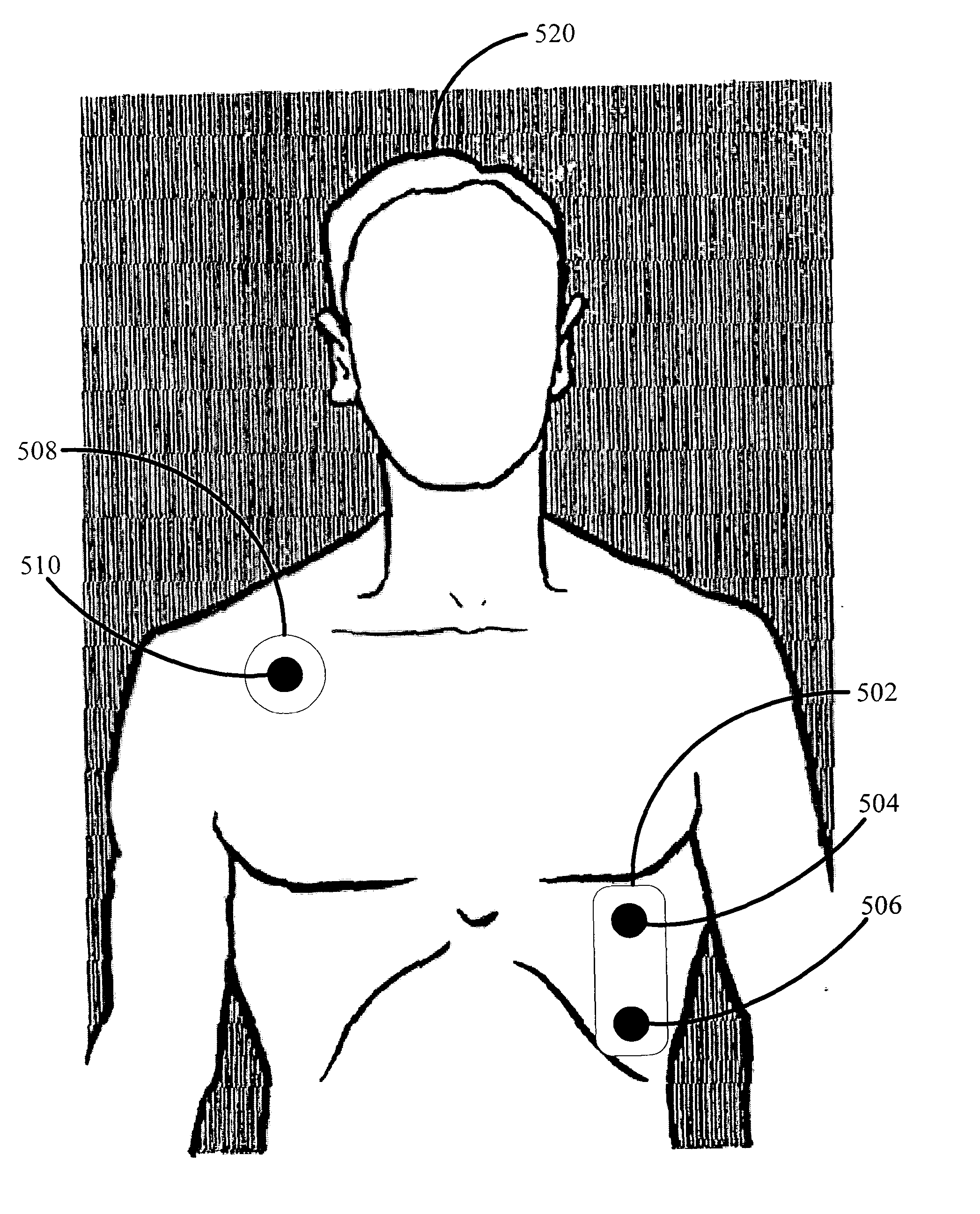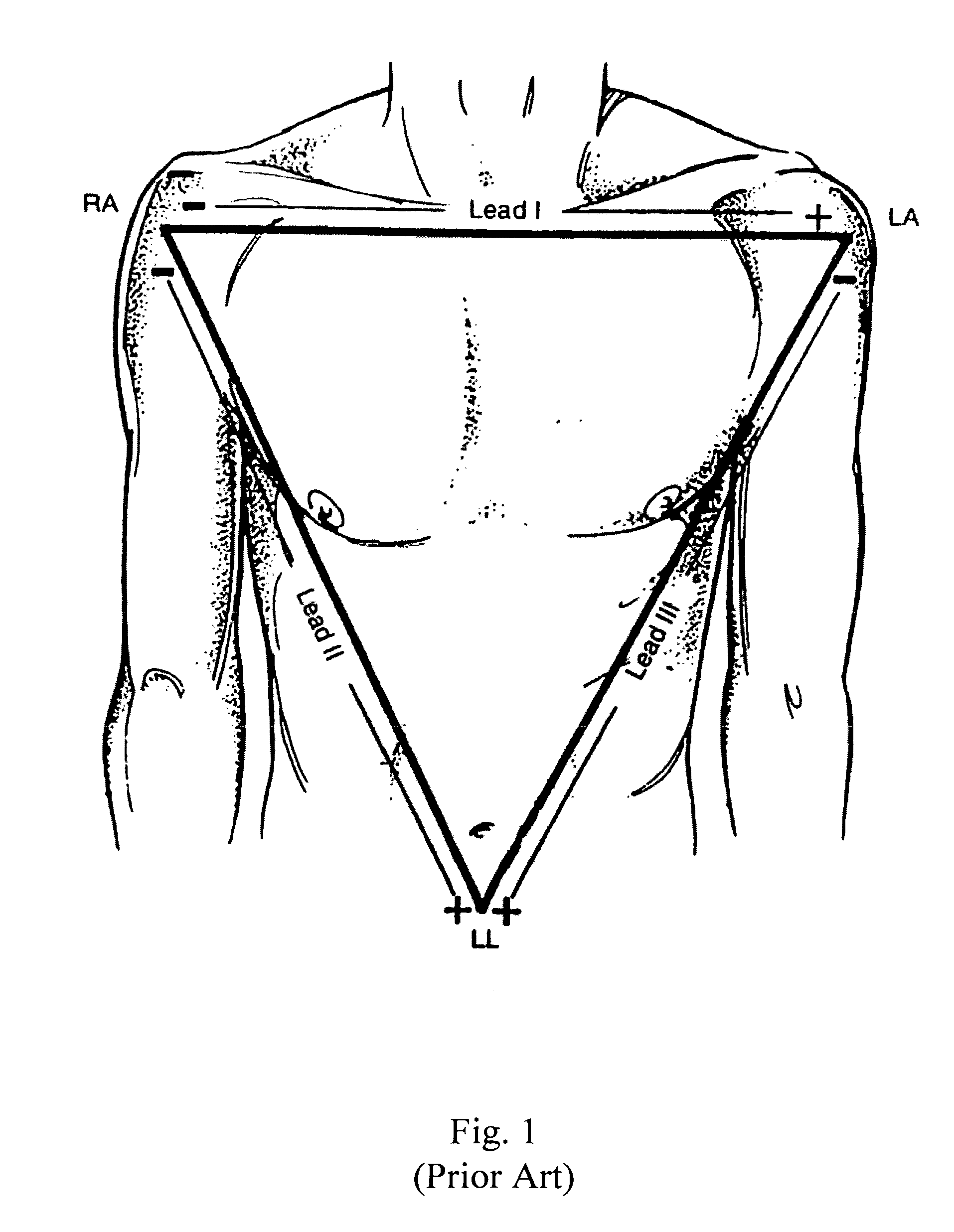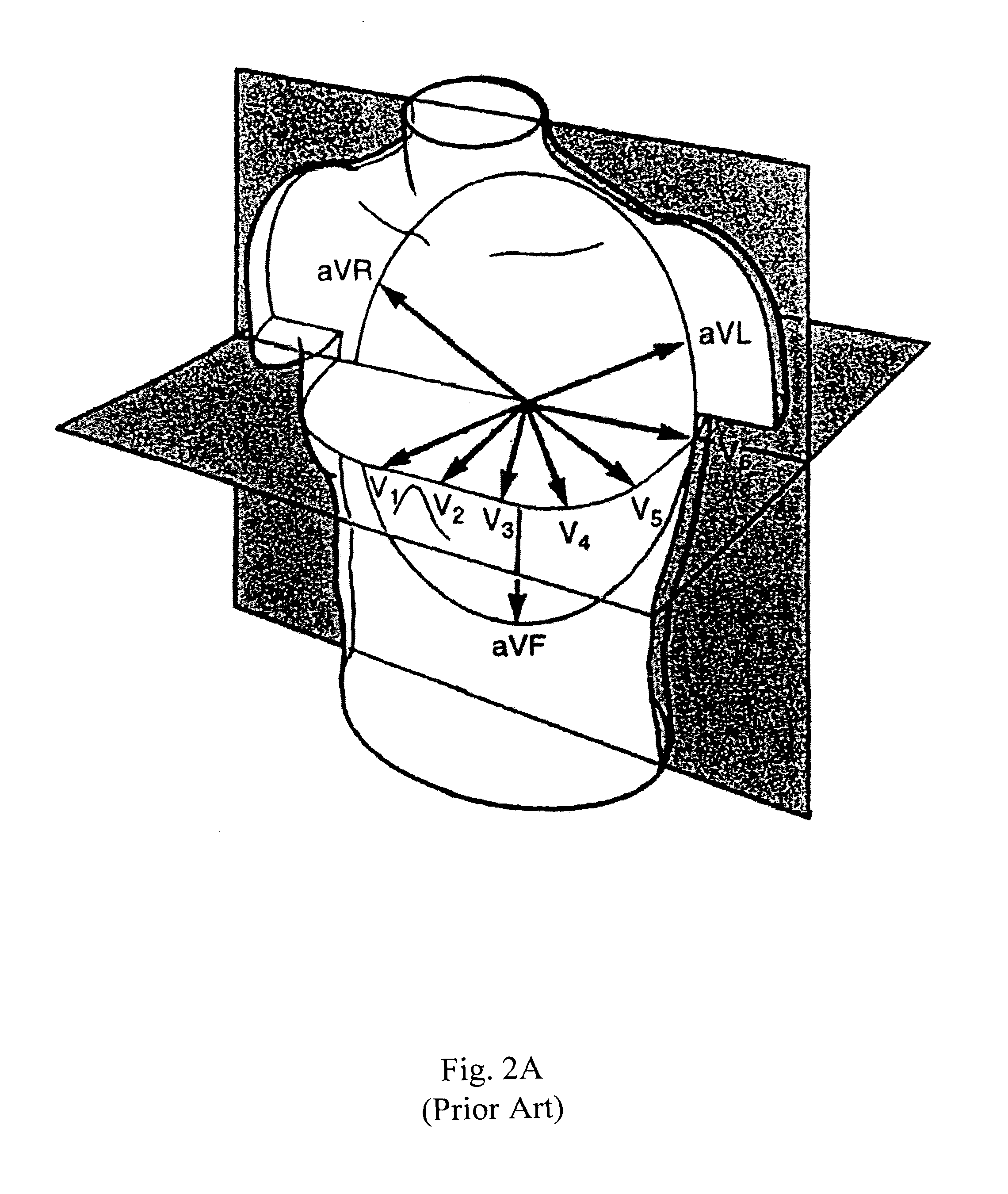Remote electrocardiogram for early detection of coronary heart disease
a remote electrocardiogram and early detection technology, applied in the field of remote electrocardiogram for early detection of coronary heart disease, can solve the problems of increasing the cost of administration, affecting the quality of life of patients, so as to achieve the effect of lowering the cost of administration
- Summary
- Abstract
- Description
- Claims
- Application Information
AI Technical Summary
Benefits of technology
Problems solved by technology
Method used
Image
Examples
Embodiment Construction
The present invention provides apparatus and methods for obtaining sensitive ECG data using a reduced electrode set. The apparatus and methods of the present invention use an adaptation of the bipolar lead known as the modified V5 lead. See London and Kaplan, “Advances in electrocardiographic monitoring” in Kaplan, 3rd edition, 1993, Cardiac Anesthesia, Philadelphia, W B Saunders, p. 323, which is hereby incorporated by reference in its entirety, for a description of such bipolar leads. See also Section 2.8, above, and FIG. 3E. FIG. 4 illustrates a number of bipolar V5 configurations, including a CS5 lead, commonly referred to as modified V5. To achieve a bipolar lead, the positive electrode is placed on the precordial V5 location 402. The negative electrode is placed at any of the locations marked by upper case letters in FIG. 4, which by convention are the second prefix of the lead (the first is “C”). See London and Kaplan, Id. The CS5 lead is obtained by placing the RA electrode...
PUM
 Login to View More
Login to View More Abstract
Description
Claims
Application Information
 Login to View More
Login to View More - R&D
- Intellectual Property
- Life Sciences
- Materials
- Tech Scout
- Unparalleled Data Quality
- Higher Quality Content
- 60% Fewer Hallucinations
Browse by: Latest US Patents, China's latest patents, Technical Efficacy Thesaurus, Application Domain, Technology Topic, Popular Technical Reports.
© 2025 PatSnap. All rights reserved.Legal|Privacy policy|Modern Slavery Act Transparency Statement|Sitemap|About US| Contact US: help@patsnap.com



